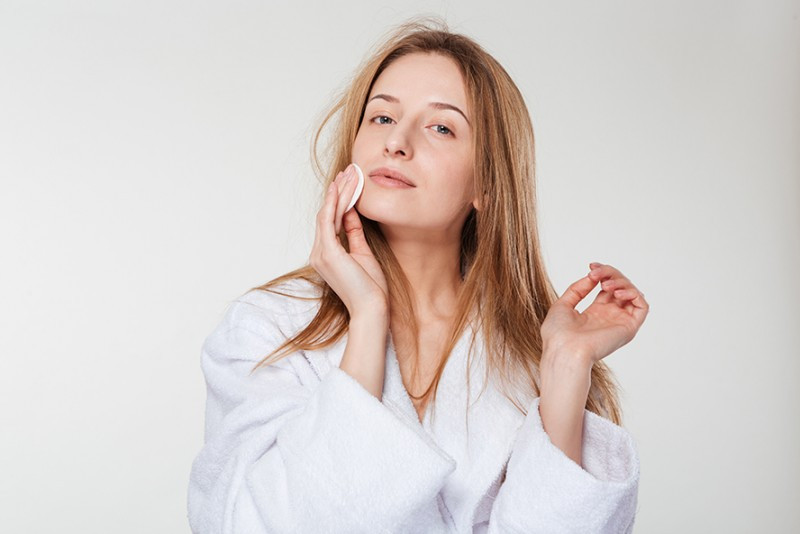Most Americans have firsthand knowledge of acne, a certain level of expertise, in fact. That's because an estimated 85 percent of them have battled zits or pimples at one point in their lives. Acne is the most common skin condition experienced in the U.S., although separating fact from fiction can be tricky when it comes to identifying the causes of acne and proper treatments. One common thought about acne open to debate is that the best thing to do when you get it is to just let it run its course, that it will clear itself. In most cases acne hits around puberty, and the assumption is that it will clear itself up by the time young sufferers reach their 20s, if not earlier. Well, maybe, maybe not. Without some treatment, per the American Academy of Dermatology (AAD), the eventual disappearance of acne could still leave behind scars or dark spot properly – and that's true even if you treat it while you have it. Then there are self-esteem issues while teens, or adults in some cases, are going through it. It's not something you can just shrug off. Not only can acne be frustrating in terms of trying to cover it up with various topical applications, it can be embarrassing, a target of ridicule, and even a source of emotional distress, perhaps even leading to clinical depression. Studies have shown that some teens with bad acne are prone to having thoughts of suicide. What Causes Acne? The most common type of acne is known as "acne vulgaris," says kidshealth.org, which in plainer English means "acne of the common type" (nothing crude or obscene). This is the kind that shows up in reddish bumps or whiteheads on the face, neck, shoulders, upper back and chest. Pores in your skin (hair follicles) contain sebaceous glands that produce sebum, an oily substance that lubricates your skin and hair. As young bodies develop, hormones can stimulate excess production of sebum. This can block, or clog, pores, thus trapping bacteria known as Propionibacterium acnes that multiplies and leads to swelling and redness – the start of acne. From there various types of acne develop, to include whiteheads, blackheads, pimples, nodules and cysts – the latter two forming beneath the skin's surface. Risk Factors for Acne Puberty and a young, maturing body are not the only aspects that might lead to an unsightly or at least untimely appearance of acne. Adults 21 and (even much) older adults can get acne, the result of other factors, as identified by Mayo Clinic:
- Hormonal changes. This isn't only true for girls and young women but for others using certain medications, such as corticosteroids or lithium.
- Family history. If your parents had acne, you'd better be prepared for a bout of your own. Genetics play a role.
- Greasy or oily substances. Oily lotions, creams and even grease in the workplace, such as at a restaurant kitchen, that comes in contact with your skin can also block pores and set acne production in motion.
- Friction or pressure on skin. Think telephones, bike helmets, tight shirt collars, backpacks, etc.
- Stress. It might not cause acne, but it can make it worse. Chill out, please.
- Regular exercise has been shown to help in the war against acne by promoting healthy blood circulation and hormonal regulation.
- AAD says a growing number of women 30 and over are getting acne.
- About 40-50 million Americans are dealing with acne at any given time.
- Various light therapies, chemical peels and acne removal – performed at the doctor's/dermatologist's office – also are available.
- You can reduce or at least manage your acne by gently washing (not scrubbing) twice a day and after sweating, such as after a workout. Focus on using your fingertips and non-abrasive products that don't irritate the skin.
- Shampoo daily if you have oily hair.
- Tanning, let alone sunburns, can damage your skin. Watch your exposure to the sun and avoid tanning beds.
- If you are using a nonprescription skin product and experience symptoms such as faintness, breathing difficulties and/or or throat tightness, seek medical help immediately.

